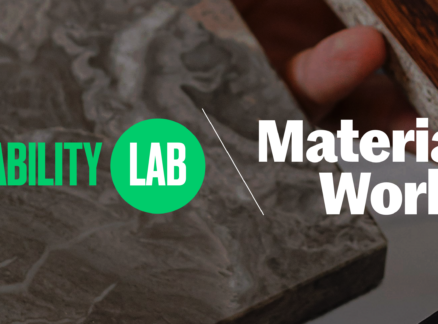August 1, 2006
The Mother of Invention
This young Brooklyn firm’s research process—necessarily fast and cheap—is quickly earning them a reputation for ingenuity.
On the third floor of Avery Hall at Columbia University, David Benjamin and Soo-in Yang swoon like proud parents. An exhibit of final assignments from Living Architecture, the graduate course they teach, includes novel projects like the Energy Tax Door, which monitors and collects the burst of power generated each time a door is opened. The Huggy Wall is an origami-paper screen outfitted with an actuator; when it senses a person’s presence, the soft white cloud of paper curls around the body in a crinkly embrace. “The point is not about learning skills or fancy code, but using your imagination,” Benjamin says.
Imagination is just what Benjamin and Yang, who make up the year-old Brooklyn-based architectural firm the Living, are becoming known for in their own work. Three concepts they’ve submitted over the past two years have been finalists in the Metropolis Next Generation® Design Competition. In 2005 the jury picked Living Glass, a breathable-polymer window that morphs open and shut in response to the amount of air and light it registers, as a Next Generation® runner-up. This year the Living submitted two more prototypes to the competition, and again both were selected as runners-up. The River Glow interface communicates water quality through a color-coded light that is triggered based on the amount of pollutants detected when the device is submerged. BCF, a “better, cheaper, faster” plywood framing system, can be deployed for housing with minimum labor and materials in relief situations, or simply as a low-cost construction solution in urban and rural settings.
The Living has also gained attention for its self-imposed strictures in generating these designs, and the firm was recently awarded a prize from the Young Architects Forum, including an invitation to lecture and exhibit at the Architectural League. The methodology that Benjamin and Yang call Flash Research demands that they produce a full-scale working prototype on a budget of $1,000 in three months. “Budget and speed were a necessity,” Yang says of the way they’ve structured the firm’s research parameters. “We pursued the prototyping because it is unique, especially in a small start-up architecture firm.”
Each Flash Research project is driven by a specific query. “The initial question for Living Glass was: What if architecture responded to you?” Benjamin says. “For BCF, we asked, What if good architecture and bottom-line development were the same thing?” Rather than simply creating computer models, they decided that to prove their solution they would need to test it, down to the exact thickness of the plywood or joint necessary for a design to be successful. “Good architecture asks questions,” Benjamin says. “We are striving for cultural relevance within our research.”
The Chicago Museum of Science and Industry is highlighting Benjamin and Yang’s Living Glass and research methods in its Modern-Day Leonardos exhibit, running through September. Plus both the museum and a corporate architecture firm in Manhattan have expressed interest in commissioning Flash Research projects, moving the duo to conclude that the methodology itself may be where the firm’s future lies. “This could generate a lifetime of work for us,” Benjamin says. While the Living doesn’t want to abandon more traditional commissions, the exploratory nature of its Flash Research projects remains untamed. Consider the firm’s latest undertaking: “It involves rainbows,” Benjamin reveals. “We can’t say much right now, but check back in three months!”





